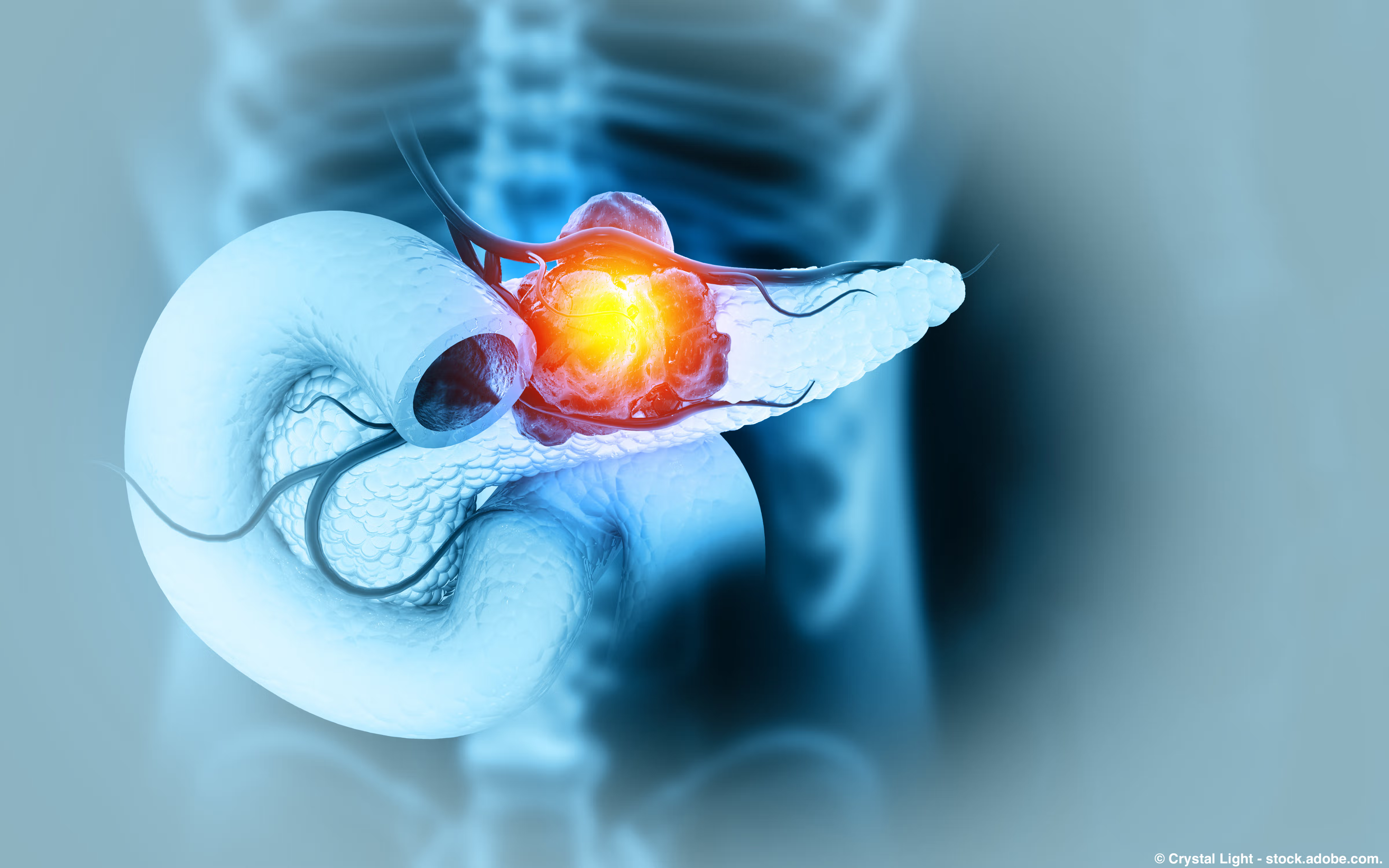Article
First-Line Treatment with Additional Combination Therapy After Resection May Improve Survival for Pancreatic Cancer
Author(s):
This survival benefit was particularly observed in patients with node-positive disease, or cancer that spread to the lymph nodes according to pathology.
After resection of pancreatic cancer, patients treated with adjuvant chemotherapy, in addition to neoadjuvant therapy, or first-line treatment, with a combination of folinic acid, fluorouracil, irinotecan and oxaliplatin had improved survival, according to results from a study published in JAMA Oncology.
The benefit with this specific neoadjuvant therapy, called FOLFIRINOX, was only observed in patients with node-positive disease, or cancer that spread to the lymph nodes.
“These findings will benefit a group of patients, as they will no longer need FOLFIRINOX after resection of pancreatic cancer in case of node-negative disease at final pathology,” said Dr. Marc G. Besselink, professor of pancreatic and hepatobiliary surgery at Amsterdam University Medical Center at the University of Amsterdam, in an interview with CURE®. “Furthermore, it puts the spotlight on the beneficial impact of FOLFIRINOX prior to surgery.”
Patients with pancreatic cancer often have a survival rate of 9% at five years, the study authors wrote. Several studies have shown that the current standard of care — upfront surgical resection with adjuvant chemotherapy, or chemotherapy administered in addition to primary therapy — can potentially lead to recurrence within two years in approximately 75% of patients.
Although trials have focused on improved survival with adjuvant chemotherapy in patients after resection of pancreatic cancer, none have enrolled patients who were treated with neoadjuvant therapy. In this current study, authors aimed to assess the link between adjuvant chemotherapy and overall survival in patients who underwent neoadjuvant FOLFIRINOX chemotherapy after resection.
“This was a large pan-European collaboration aimed to study the impact of FOLFIRINOX chemotherapy before and after surgery for pancreatic cancer,” said Besselink. “FOLFIRINOX has changed the landscape of pancreatic cancer surgery completely. More patients can now be offered surgery, but there were several questions regarding the optimal duration (number of cycles) and optimal timing of FOLFIRINOX in these patients.”
Study authors assessed data from 520 patients (median age, 61 years; 53.7% men) who underwent resection of pancreatic cancer and two or more cycles of neoadjuvant FOLFIRINOX chemotherapy. Patients either did (343 patients; median age, 61 years; 56% men) or did not undergo adjuvant therapy (177 patients; median age, 61 years; 49.2% men), defined as one or more cycles of postoperative chemotherapy with or without radiotherapy. Study authors calculated overall survival (OS), or the months between surgery plus three months —when patients would be eligible for adjuvant therapy — and death.
The median number of cycles of FOLIFIRINOX administered in this study was six. Of the patients who underwent adjuvant chemotherapy, 19.8% received FOLFIRINOX, 58.6% were treated with gemcitabine-based therapy, 13.1% received a combination or other agents, 4.1% were treated with capecitabine and 4.4% received an unknown type of chemotherapy.
OS was observed for a median of 38 months after diagnosis and a median of 31 months after surgery. This did not differ among patients who received adjuvant chemotherapy compared with those who did not, as both groups had an OS of a median of 29 months.
Adjuvant chemotherapy improved survival in patients with node-positive disease compared with not receiving the therapy (26 months vs. 13 months, respectively), although this was not observed in patients with node-negative disease, or cancer that did not spread to the lymph nodes (38 months vs. 54 months (38 months vs. 54 months, respectively).
“It is likely that FOLFIRINOX after resection of pancreatic cancer is only useful when pathologists find node-positive disease,” said Besselink. “Furthermore, … there is no difference in the duration (number of cycles) of treatment prior to surgery.”
Besselink added that more research is needed in this area since this study was a retrospective cohort study, which assesses outcomes after the fact compared with assigning patients a specific treatment. “Disclaimer, though, that this was no randomized trial, so there is no 100% guarantee that these findings are correct at the moment,” said Besselink. “That will require randomized trials first. Therefore, some oncologists will continue to [advise] FOLFIRINOX chemotherapy also after surgery in patients with node-negative disease.”
For more news on cancer updates, research and education, don’t forget to subscribe to CURE®’s newsletters here.



